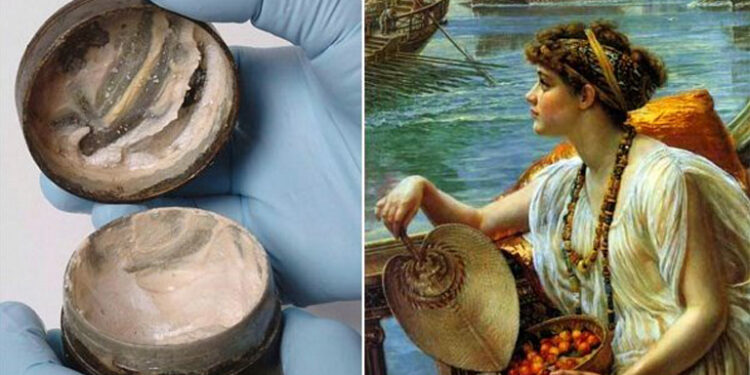While excavating a Roman temple on London’s River Thames banks, archaeologists discovered the world’s oldest face cream with the fingerprints of their last person 2,000 years ago.
The London Museum opened the tightly wrapped cylindrical tin, which measured 6 cm by 5 cm, to reveal a pungent-smelling white cream.
“It seems like an ointment because of the finger marks in the lid. Someone who is the last one using it to apply on something with their fingertips and has used the lid as a dish to take the ointment out,” museum curator Liz Barham stated as she opened the box.
The finely crafted canister, which is now on display at the museum, was nearly entirely constructed of tin, a valuable metal at the time. The scientists are currently analyzing the cream. It may be a beauty treatment for a fashionable Roman lady or a face paint used in temple rituals.

“It’s so lucky. This entirely sealed box lied on the swamp, which made its content well preserved – the metal is virtually non-corrosive,” said Nansi Rosenberg, a senior archaeological consultant on the project.
According to Federico Nappo, an expert in Pompeii’s ancient Roman cosmetics, this discovery was significant. Animal lipids are most likely present in the cream. In old Roman, donkey’s milk was utilized as a skin treatment for the skin. However, determining the cream’s composition should not be difficult.
The pot was discovered at the bottom of a blocked ditch in Southwark, two miles south of central London.
The site contains two Roman-Celtic temples, a guest house, an outdoor area suitable for mass worship, statue plinths, and a stone pillar. It is located near the river crossing where three roads meet – Watling St from Dover, Stane St from Chichester, and the bridgehead road over the Thames.
Last year, the archeologists found the first known inscription bearing the Roman name of London on a stone tablet, dated to the mid-second century at the complex. It is the capital’s first religious complex, a rare example of organized religion in London 2,000 years ago.
“We just began the analyst and interpretation of the finds,” Nansi said, “and I’m sure there will be more discoveries as we fit together the jigsaw puzzle we’ve excavated. However, it has already changed our perspective completely – Southwark was an important religious center in the Roman capital.”
The land will now become a residential development with 521 apartments after excavation work is finished.























